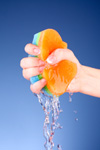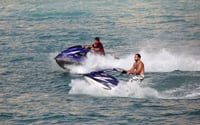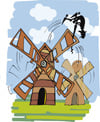The other day, I woke up with a lingering quandary: Are the concepts of
Moisture Content and Water Activity the same thing?
As usual, I’ve decided to take on the task of clarifying the difference. I hope I pull it off.
From the perspective of someone who supplies instruments that measure moisture content, water activity has not been a primary consideration. However, I believe that comparison and contrast of these important concepts will be useful.
Regarding moisture content, the basics are simple enough:  The amount of moisture in a material is usually expressed as a percentage of the total. This is easy to understand until you start the measurement process.
The amount of moisture in a material is usually expressed as a percentage of the total. This is easy to understand until you start the measurement process.
It seems that moisture finds many ways to penetrate materials. It lingers on surfaces, rests between constituents or binds itself to component molecules and invades in other insidious ways.
The most common method of moisture content measurement is heating the material to dry it and recording the beginning and ending weights; Known as Loss On Drying. This technique returns knowledge of the most easily measured moisture. More difficult moisture measurement requires breaking down the substance’s chemistry. The Karl Fischer method can be used for this. In addition, indirect methods, which include measuring energy absorption and changing electrical characteristics, are used to get at total moisture.
As with most superficially easy processes, moisture measurement appears to be simple at first, but we find complexity in the details.
***
Water Activity, on the other hand, is a measure of water that is available to react with or attach itself to another material. As I’m sure you know, water is very energetic and pervasive. The process of water attaching itself to other materials is known as Sorption. The strength of  this combining force is known as the water’s energy level.
this combining force is known as the water’s energy level.
Usually when I tell people that CSC Scientific provides instruments that measure particle size, surface tension or moisture, they react with; “So Who Cares?”
In the case of water activity, everybody should care, because it indicates how much water is available to react with other elements to precipitate food spoilage, develop toxic bacteria or botch production processes.
Putting a sample in a closed chamber until it has reached equilibrium, at which point the relative humidity is calculated, makes the measurement. Using a simple formula, this measurement is converted into water activity units (aw).
A Water Activity (aw) value of 1.0 indicates pure water, while a 0.0 value specifies a completely dry condition. Aw value limits are set for individual food products to insure stable, non-toxic product conditions. Similarly, target values are set for other products such as plastics, pharmaceuticals and cosmetics.
The relationship of this energy or combining characteristic of moisture in a substance to its total moisture is correlated by developing comparison curves called moisture sorption isotherms (1). These graphic representations are developed as follows:
At equilibrium, the relationship between water content and equilibrium humidity of a material can be displayed graphically by a curve, the so-called Moisture Sorption Isotherm.
For each humidity value, a sorption isotherm indicates the corresponding water content value at a given, constant temperature. If the material’s composition or quality changes, then its sorption behavior changes also.
Due to sorption process complexity, the isotherms cannot be determined by calculation, but must be recorded experimentally for each product.
In sum, moisture content defines the amount of water in a material and water activity defines how that water will react with -- and affect -- other substances.
I hope this helped shed some clarity on the difference between moisture content and water activity.
activity.
In this exposition, I tried to minimize the subjectivity that comes from years of working with equipment that measures only moisture content. I hope you find this interesting and that I did not emulate Don Quixote by taking on a preposterous illusion.
I continue in a state of wonderment about moisture measurement.
Art
P.S. Click on the button to see our range of moisture equipment.
P.P.S. Subscribe to these rants about test equiment. Sign on at the top of this page.
(1) Leonard N. Bell and Theodore P. Labuza in their paper, "Practical Aspects of Moisture Sorption Isotherm Measurement and Use" defined moisture sorption isotherms.



